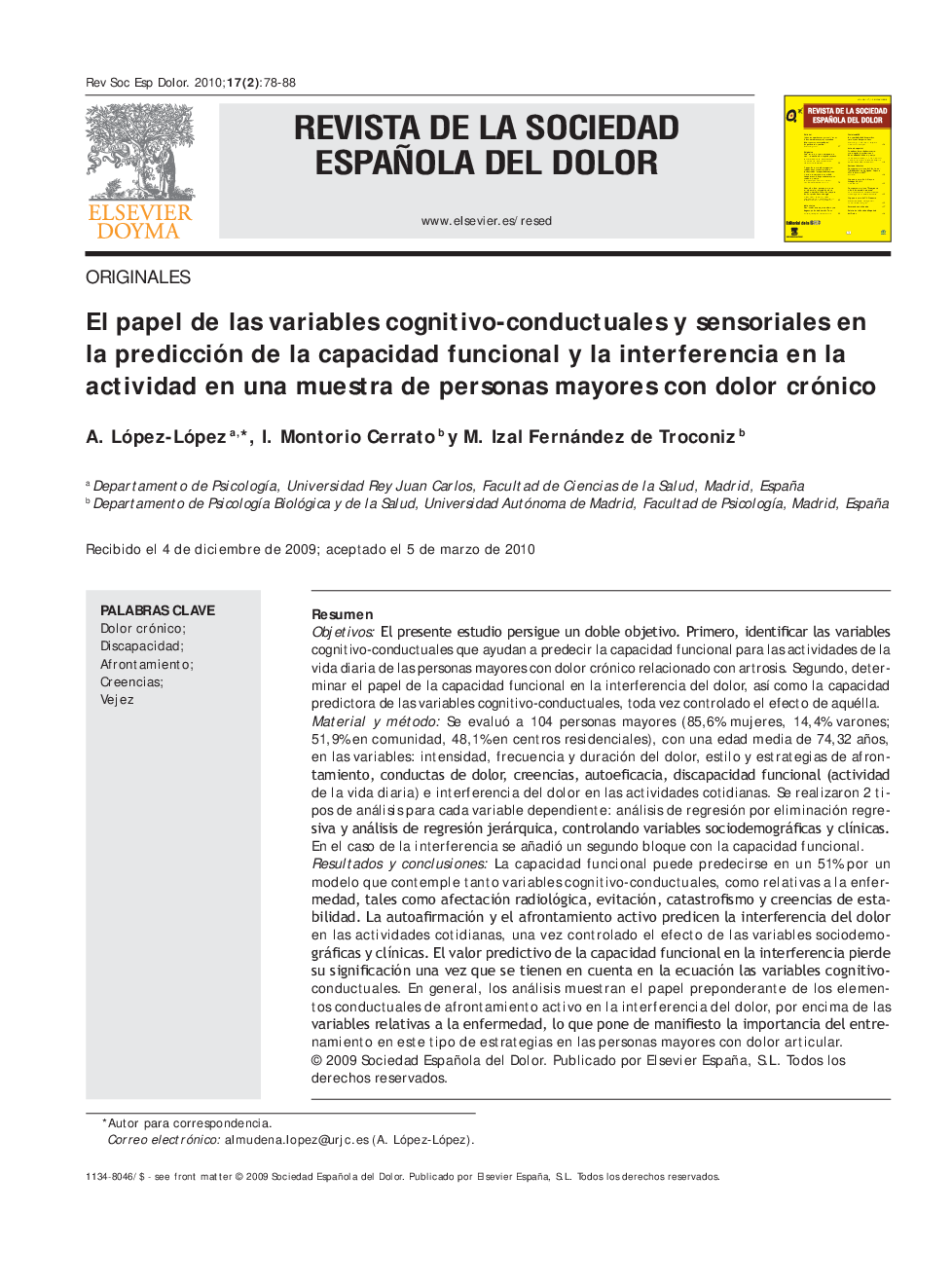| Article ID | Journal | Published Year | Pages | File Type |
|---|---|---|---|---|
| 2769972 | Revista de la Sociedad Española del Dolor | 2010 | 11 Pages |
Abstract
The results suggest that there is a profile of variables that can help to explain functional disability: advanced age, a high degree of radiological affectation, avoidance behaviours, pain catastrophizing and stability beliefs. With regard to the prediction of pain interference, once the effect of the socio-demographic and clinical variables has been controlled, only self-affirmation and active coping remain significant. Functional capacity loses its predictive significance as soon as the cognitive-behavioural variables are included in the equation. In general, the analyses show the prevailing role of behavioural elements of active coping in the extent to which pain interferes in activity, over and above that of disease-related variables. This highlights the importance of training in these types of strategy in older people with chronic pain due to osteoarthritis.
Keywords
Related Topics
Health Sciences
Medicine and Dentistry
Anesthesiology and Pain Medicine
Authors
A. López-López, I. Montorio Cerrato, M. Izal Fernández de Troconiz,
